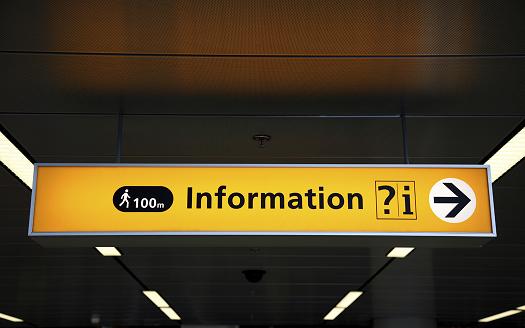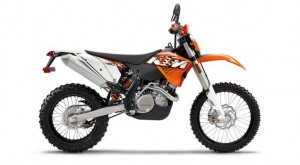 Riding a motorcycle presents its own set of challenges and issues, and intersections can be particularly dangerous for bikers. Stay safe with the following tips.
Riding a motorcycle presents its own set of challenges and issues, and intersections can be particularly dangerous for bikers. Stay safe with the following tips.
Assume that no one can see you.
While driving defensively is always a good idea, when you’re on a motorcycle, it’s a must. With all the distractions that car drivers have, they often aren’t paying attention like they should—and if you’re on a bike, you’re likely to lose in an accident.
Make yourself visible: turn on your headlight, wear brightly colored clothing and gear, and use hand signals as well as your bike’s turn signal. As you approach the intersection, be sure to stay out of drivers’ blind spots. Changing your lane position once or twice increases your visibility to those around you. Even a slight variation in your position will get the attention of drivers.
Have an escape plan in mind.
If you anticipate possible trouble spots as you ride, and create an out for yourself, you’ll know exactly what to do in case you have a problem. For example, if you ride in the middle lane, you have an extra lane to move into if you need it. If you ride a specific route each day, you’ll learn the traffic patterns and trouble spots and know what to do to have a smoother and safer ride.
As you enter an intersection, slow down.
Drivers turning left in front of bikes cause a large percentage of accidents, and if you’re riding fast through an intersection, you have less time and space to slow down. Don’t assume that no turn signal means no turn; many drivers fail to use them. Slow down and look in all directions as you proceed through the intersection—and do not change lanes while you are in the intersection unless absolutely necessary.
If you are at the front of the line when the light turns green, look both ways before proceeding in case someone runs the red light.
Always allow more space than you need.
Never tailgate, and stay as far back from the car in front of you as possible. If a vehicle is tailgating you, pull over and let it pass. You do not need to prove a point to anyone, and road rage is something you want to avoid, especially while on a bike.
Reconsider lane splitting.
Not only is it illegal in many states, it’s dangerous. It might save you a few minutes, but you run the very real risk of someone pulling out in front of you or hitting you. It’s not worth it.
As South Carolina motorcycle accident attorneys who also ride, we know how challenging it can be to ride. Stay safe!
Here’s What You Need to Know
Have you been reading this blog because you’re new to biking and not sure if it’s right for you? If so, we have a few ideas to help you get off the fence about buying a motorcycle and joining us in the exciting world of biking.
Talk to other bikers.
Don’t be afraid to walk up to bikers and ask them about their experiences. Most of them love to talk motorcycles, especially to anyone who is curious and thinking about becoming bikers themselves. Buy them a beer and ask away, and don’t forget to find out what they wish they had known about motorcycles and what they would have done differently. You want to hear the positive and the negative.
If possible, talk to someone who is approximately your height and weight and find out what kind of bike they ride and why, so you can get started on the next step.
Research different types of bikes.
If you don’t buy the right bike, you won’t want to ride it. There are several different types of bikes, and it’s well worth your time to do your research. Go to websites like Cycle Trader and Motorcycle.com to get a feel for what’s out there. Go to a dealership and sit on a few bikes to decide which handlebars you like. You can also read this post for more ideas to determine your perfect bike.
Know the traffic laws.
As motorcycle accident lawyers, we regularly talk with people who weren’t as knowledgeable as they could have been about traffic laws. Our website has a link to South Carolina motor vehicle law, and we always advise new riders to familiarize themselves with the law before riding.
Put safety first.
Do you plan to wear a helmet? How about leather? The more you can protect yourself in case of accident, the better. Remember that when you’re riding, you’ll be much smaller than a car and not easily seen. You want to assume you’re invisible to drivers, so you’ll always need to leave plenty of space between you and other vehicles. For some, this can be very stressful and cut down on the enjoyment they expected to have while riding.
Taking a motorcycle safety course is a good way to become knowledgeable about ways to help drivers see you and to keep yourself safe in traffic.
Try before you buy.
If you have a friend that’s a biker, perhaps he or she could give you a little taste of what riding is like. You could ride on the back of a bike, or maybe get a riding lesson. Try biking to see if you like it before you jump into it.
Find out how much everything will cost.
Once you’ve determined which bike you’ll need, find out how much everything will cost. Add the cost of insurance, licensing, safety equipment, clothing, and safety courses.
And finally, go with your gut. What is it telling you to do? Are you ready to ride?
Do you have any ideas for those new to motorcycles?
Motorcycle recalls beginning in June 2011 are listed below. Manufacturers will notify owners of affected bikes, but if you have not been notified, or if you’re not sure whether your motorcycle is on the recall list, customer service numbers are listed.
Image to the left of a 2011 KTM 450 EXC, taken from KTM.com.
KTM / Husaberg
KTM has recalled over 1,200 KTM and Husaberg motorcycles manufactured from November 2009 through November 2010. Some handlebar clamps were not heat treated correctly, and they can develop cracks that allow the handlebars to move unexpectedly, causing loss of control or a collision.
The following KTM and Husaberg models are affected:
- 2011 Husaberg FS 570
- 2011 Husaberg FE 570S
- 2011 KTM 450 and 530 EXC
- 2010-2011 KTM / 690 ENDURO R
The recall began in June 2011, and owners can contact KTM Customer Service at 1-888-985-6090. Any authorized KTM dealer can replace the defective clamps free of charge.
For more information, contact KTM directly, or click here.
Honda
Honda has recalled over 3,000 model year 2010 and 2011 motorcycles for defective bank angle sensors that could give incorrect readings and cause engine stalling. Affected models include VT750 Shadow and Phantom motorcycles built from June 2009 to March 2011.
Honda will replace defective bank angle sensors, and owners may contact Honda Motorcycle Customer Service at 1-866-784-1870. Reference Honda Safety Recall #R80.
For more information, click here.
Victory
Because of incorrect machining on handlebar risers and clamps, Victory has recalled over 800 Cross Country motorcycles produced from January through April 2011. Polaris, owner of Victory, says the handlebars may slip, causing loss of control.
The recall began in June 2011, and Victory dealers will test and replace the handlebar assemblies of affected motorcycles free of charge. For more information, owners may contact Victory Customer Service at 1-888-704-5290 or click here.
Owners of affected motorcycles, or those with questions about any past or present manufacturer recall, can contact the National Highway Traffic Safety Administration’s Vehicle Safety Hotline at 1-888-327-4236 (TTY 1-800-424-9153), or visit the NHTSA’s website at safercar.gov.
 The upcoming holiday is one of the most important to us here in the U.S., and safety is the last thing on our minds. However, every year people are hurt or killed during the celebration. For example, drunk driving increases in the few days surrounding the 4th of July, especially when it falls near the weekend. A little caution can go a long way in keeping you and your family safe.
The upcoming holiday is one of the most important to us here in the U.S., and safety is the last thing on our minds. However, every year people are hurt or killed during the celebration. For example, drunk driving increases in the few days surrounding the 4th of July, especially when it falls near the weekend. A little caution can go a long way in keeping you and your family safe.
Safe driving tips
- Always wear your seatbelt, and make sure your passengers do too.
- If you plan to drink, have a designated driver. If you drink, don’t drive.
- Increase your following distance and your awareness of other drivers. Stay off your cell phone and pay extra attention to the road.
- Minimize your time on the road between midnight and 7 a.m.
- Turn on your headlights so other drivers can see you.
- Report any suspected drunk drivers to law enforcement. Put emergency and non-emergency numbers in your cell phone and hand it to your passenger to make the call.
- Make sure your car is in good condition, that all tires including the spare are properly inflated, and that you have a first-aid kit, roadside tool kit, water, food, and a flashlight.
As you know, fireworks are legal in South Carolina, but any firework can be dangerous if handled carelessly. Sparklers, often thought to be “safe,” can reach temperatures of 2,000 degrees. Common sense will help you use fireworks responsibly.
Handling fireworks safely
- Don’t set off fireworks in any enclosed area.
- Wear safety glasses.
- Keep a hose or several buckets of water nearby at all times.
- Make sure hair is tied back and clothing isn’t loose, especially when using sparklers.
- Don’t combine fireworks hoping for a big show.
- If you have a dud, wait at least 15 minutes, hose it down, then pick up with a shovel and soak in a bucket of water.
- Always buy fireworks from a vendor. Don’t use homemade fireworks.
Have a happy and safe 4th!
 Enrolling in motorcycle school is one of the best ways to become a better and safer motorcycle rider. Not only does motorcycle school help you to become proficient in new-found skills, but it also helps you to feel more confident in any type of environment—whether you’re traveling through a big city or obstacle track.
Enrolling in motorcycle school is one of the best ways to become a better and safer motorcycle rider. Not only does motorcycle school help you to become proficient in new-found skills, but it also helps you to feel more confident in any type of environment—whether you’re traveling through a big city or obstacle track.
Many motorcycle schools offer a range of classes for different skill levels, helping riders get the most beneficial instruction for their money.
A great motorcycle school will teach beginners how to observe the road and surroundings around them, body positioning techniques, coordination strategies, traction skills, safety tips for various settings, and steering, handling, and shifting techniques.
What many beginner riders might not realize is that riding a motorcycle is a whole different game than operating a motor vehicle. You have to deal with drivers who may not always be courteous or aware of your presence and there are different laws and rights while operating a motorcycle. Not to mention, there are several safety factors riders must take into account while operating a motorcycle, including head and body protection, weather conditions, traction, and time of day.
Honing your motorcycle skills is one of the best ways to decrease your chances of being involved in a motorcycle accident and preventing personal injury.
Have you ever attended motorcycle school? If so, what did you think of it?
Some of my favorite rides happen right here in the Lowcountry. I love the landscapes and the relaxing atmosphere of the countryside and coastline. But there are times when I have to venture into urban areas, which has an effect on my mindset and driving. My mind is no longer clear and calm. Instead, I’m highly attentive to my surroundings and always on high alert with the hustle and bustle of big city life.
When you’re driving into the city on your motorcycle for the first time, it’s important to make a proper transition in your mindset and know primary safety tips to prevent you from being involved in a motorcycle accident.
Below are a few tips for riding in the city:
Keep your distance: One of the best ways to avoid a motorcycle accident is by keeping a safe distance from other drivers. I usually stay a good 20 – 30 feet behind any vehicle to ensure that I have enough time to stop without causing the person behind me to ram into me.
Look out ahead: I always keep my eye on the vehicles in front of me (not just the vehicle immediately in front of me). Often times, the vehicle in front of you might not see that the traffic ahead has stopped and will slam on his or her breaks. This, in turn, requires you to slam on your breaks. To prevent this from occurring, always keep an eye on the first two vehicles in front of you. If you see the first vehicle breaking, you can start to tap your break to anticipate a stop before you have to screech to a halt.
Stand out: Many motorcycle accidents occur when drivers either don’t see a motorcyclist or do not understand a motorcyclist’s right of way. To prevent this, always wear bright colors, don’t drive in a vehicle’s blind-spot (if possible), and be extremely cautious when a vehicle is in close range. If you have the right of way, don’t just assume the driver knows this. Keep an eye out, go slow, and be ready to break or swerve.
And my final piece of advice is to be aware of all your surroundings, looking out for any potential hazards or signs that another driver might not be paying attention.
If you or someone you know has been involved in a South Carolina motorcycle accident, contact the Uricchio Law Firm to speak with one of our personal injury attorneys.
We’ve written several blog posts in the past that inform our readers about motorcycle safety tips. Today, we’d like to share a great video on how to find a motorcycle helmet that works for you and provides you with the most comfort and protection possible.
As we all know, it can be a challenge finding a helmet that fits in your price range and protects you from injuring yourself. In the below video, you’ll find out what features to look for when helmet shopping and understand what elements make a helmet effective.
See below for this video:
Ringing in the New Year is one of the most exciting times of the year! Champagne, dancing, singing, and socializing, all wrapped up into one night is always a blast. Here, at Uricchio Law Firm, we’d like to wish you a happy and safe New Year’s. We’d also like to provide you with just a few safety tips to avoid personal injury and DUI charges this New Year’s Eve.
See below:
- Have a designated driver: If you’re going to be traveling during New Year’s Eve and New Year’s be sure to have a designated driver planned out for the evening. This decreases your chances and the chances of other drives from being involved in a motor vehicle accident, as well as eliminates your chances of being charged with a DUI. Also, there is often a much higher amount of police surveying the roads for drunk drivers.
- Try to stay off the roads as much as possible: Even if you have a designated driver for yourself, you cannot prevent drunk drivers and careless drivers from causing an accident with your vehicle. When you stay off the roads as much as possible, you automatically reduce your chances of being involved in a motor vehicle accident.
- Have a plan and stick to it: Before you go out for the night, decide who you will be going with, where you will be going, and what the environment will be like at your destination(s). Always stay with the friends you went to the party or bar with, especially if you are unfamiliar with the other individuals attending. Watch out for yourself and for your friends and never take a drink from an unfamiliar person. A rule of thumb is to always watch your drink being made and never lose sight of it from point A (the bar) to point B (your hand).
Stay safe and have a wonderful New Year’s!
What will you be doing this New Year’s Eve?
If you missed part I of this post, feel free to check it out here.
Only Smooth Moves:
Turning a motorcycle on such a slick surface demands an ultra-smooth approach. Getting on the brakes abruptly or making a sudden steering input could put you in the guardrail. So you want to be slowed down before you go in there and keep the throttle neutral all the way through –and be ready for cars that might get unstuck and block the whole mess.
That smooth approach to speed and direction changes will serve you well on all wet roads. Initiate your turns a bit more gradually. Downshift smoothly, engaging the clutch a bit slower than usual, and avoid abrupt throttle changes. Get on the throttle progressively. Use a taller gear to reduce the forces reaching the rear tire. Apply the brakes in such a way that the tires are not loaded abruptly. Allow more space to stop or slow down so that you need less. And also make sure that drivers around you have time to react to your moves.
The Eyes Need It: Though it might look better at the end of a long ride in the wet, a black rainsuit is going to be very hard to see in heavy rain.
**Image to the left taken from Motorcycle Superstore website.
That brings us back to vision. The ability of other drivers to see us could be the single biggest issue a motorcyclist must confront in the rain. With low light, windows obscured, and a streaked and possibly fogged windshield, the driver of a car may have a very difficult time seeing the world ahead. If you are wearing black, or even worse, a neutral color like gray or olive drab, you blend into that gray world. A bright yellow rainsuit is probably the best choice and the single simplest way to make your wet-weather rides safer, though white is also an excellent choice and even better than yellow at night. Fluorescent colors also help during the day and retro-reflective striping or panels on your rainsuit, helmet or a pack also help at night. A visible helmet color also makes a difference at night.
How about your own ability to see? Even with a faceshield that’s wet on both sides, you probably have a better view of the situation around you than the average car operator does in the rain. The drops on a faceshield (or goggles) are inside your focal point and are just vague blurs when you focus on the road ahead. However, your view can be impaired by faceshield fogging or a windshield that rises into your line of sight. Unlike a faceshield, a windshield is well out in your focal range, and the water on both sides makes it hard to see through. Rain-X does help disperse water on both face- and, more importantly, windshields.
Anti-fogging solutions and the Fog City Fog Shield effectively stop fogging, although the Fog Shield is not recommended for use at night because it creates some ghost images. Even if you don’t have a commercial anti-fog solution, a thin layer of hand or dish soap will stop fog. You can wipe it on wet or dry, than polish it off.
A Rainy Night:
For many motorcyclists, the demons come out on a rainy night. Each of those raindrops on your faceshield or goggles picks up a pinpoint of light from every light around you. Riding behind a windshield that is too tall to see over is extremely difficult, which is why we caution against that configuration. Oncoming cars can completely obscure your vision. A timely wipe of your faceshield can help, but you may be unable to see the road at all for a moment. Puddles may be completely undetectable.
On the other hand, lights that aren’t so bright — such as taillights — reflected in the road surface ahead can show you features of the road surface that you headlight doesn’t illuminate. My preferred strategy is to follow (at a distance that keeps me out of its spray) a vehicle with lots of taillights, watching the point where they are reflected to pick out potholes, seams, or objects lying in the road. Watching the vehicle will also warn you of large puddles, which could cause hydroplaning if you hit them fast enough.
Even at night a motorcyclist has a few aces to play. One advantage of a motorcycle is your high view point compared a person in a car. At night, this allows you a better view of the road surface because you have a steeper angle of view. As a result, it’s easier to see striping, and other shallow features. You can also use the reflective qualities of wet surfaces to your advantage. Wet utility wires or tree branches can warn you of a car approaching over a hill or around a corner. Brake lights reflected under a truck can alert you of an impending stop.
Did you find these bad weather motorcycle safety tips helpful? We’d love to hear from you in our comments section.







